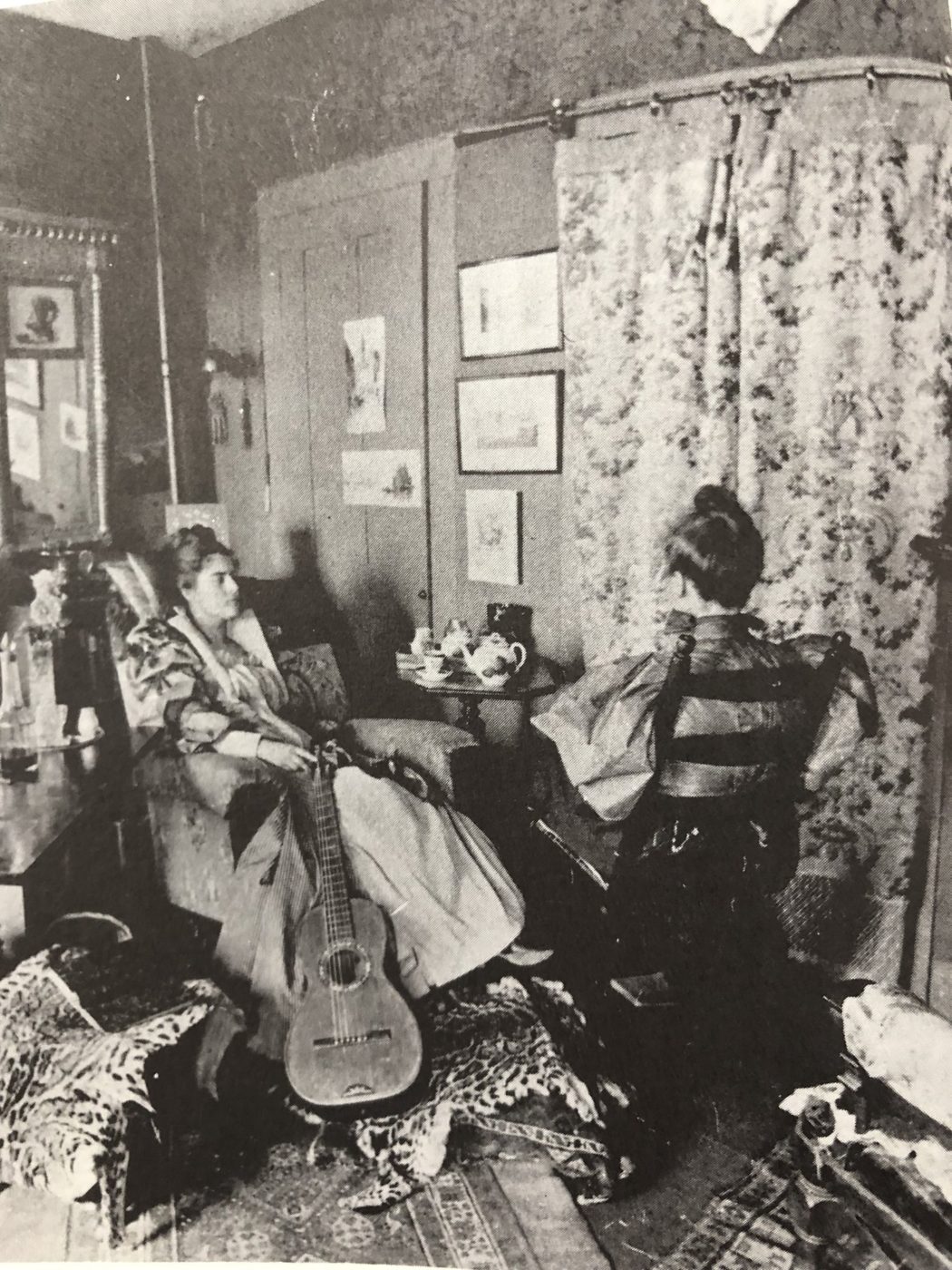Anything But Orthodox: The Feminists of the Heterodoxy Club
In the early 20th century, Greenwich Village was teeming with vitality and possibility. Great intellectuals met on street corners, in cafes, as part of clubs, using the neighborhood as a playground for their minds to connect and create. One center of such interactions was the Heterodoxy Club, the women’s debating group that created common ground for the foremothers of feminism to discuss, learn, and debate freely before spreading their transformational ideas across the nation.

Marie Jenney Howe, a Unitarian minister and leader in the National American Woman Suffrage Association, founded Heterodoxy in 1912. Membership was granted on a single condition: that the prospective member “not be orthodox in his or her position,” a condition that attracted voracious women of myriad backgrounds and political perspectives. They began to meet for lunch in Greenwich Village every other Saturday, claiming Polly’s restaurant (then at 135 Macdougal Street) as the meeting place of their burgeoning intellectual community. When Howe brought her gavel down that first Saturday in 1912, it is doubtful that she or Heterodoxy’s newly minted members could predict the enormity of their future contributions to American history.

Heterodoxy’s bi-weekly meetings were not merely opportunities for a light lunch and casual company. Instead, the women of Heterodoxy met to steep themselves in the fiery debate and transformative ideas that arose from the club’s discussions. Every meeting centered around a chosen topic ranging from birthing techniques to psychoanalytic psychology to labor organizing and education reform.
The women, most of them prominent public figures and members of their own leagues, associations, and societies, were often known for their unruliness and impassioned efforts to transform their individual fields. But when they met on Saturday mornings at Heterodoxy, they did not do so to seize an opportunity to advance their own causes. Heterodoxy instead determined to create an intimate space for ideas to burst forth organically and without judgment, allowing these women to exist freely and openly as themselves.

“Here’s to Marie who in the midst of this strange universe and this cold city created a little world in which we could laugh and play; talk and make friends”
–Inez Haynes Irwin entry, “Heterodoxy to Marie” scrapbook
This was surely a welcome reprieve from the spotlight for Heterodoxy’s original members, the list of which includes some of the most recognizable figures in American feminism. Crystal Eastman, the distinguished suffragist and eventual co-founder of the American Civil Liberties Union, Inez Milholland, women’s rights activist and labor lawyer, and Susan Glaspell, a founder of modern American Drama, were among Heterodoxy’s regular members.
The club occasionally hosted guest speakers as well, with birth control revolutionary Margaret Sanger, radical anarchist Emma Goldman, poet Amy Lowell, and disability advocate Hellen Keller among the most notable club affiliates. Margaret Sanger was even thought to have been able to secure financial and social support for the birth control movement in part because of her connection to the Heterodoxy Club and its members. Heterodoxy meetings thus created an opportunity for these women to cultivate deep social and political networks that they would draw on as they sought a more equal and just America.

Though we now know the names of Heterodoxy members and affiliates, the true content of their discussions are lost to us. In order to protect the club’s members and cultivate a truly free conversational environment, Heterodoxy members abstained from recording meeting notes. Yet that does not mean that we have not been profoundly touched by the ideas exchanged at Heterodoxy meetings. Instead, the ideas birthed there lived on in the bright minds who left Heterodoxy meetings with a new, kaleidoscopic idea of what feminism and the world could and should be.
As I look round and see your faces—
The actors, the editors, the businesswomen, the artists—
The writers, the dramatists, the psychoanalysts, the dancers.
The doctors, the lawyers, the propogandists
As I look round and see your faces
It really seems quite common to do anything!
Only she who does nothing is unusual.
-Paula Jakobi entry, “Heterodoxy to Marie” scrapbook
Want to learn more about Heterodoxy and the change-making feminists of Greenwich Village? Check out Hotbed by Joanna Scutts, published this past June with Seal Press, and just named one of the best 16 books of 2022 by Vox Magazine!
